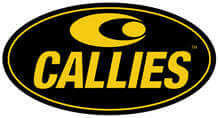
MS Access As A Dev Tool
Access continues to be a highly efficient tool for business database development.
Don't let a broken database ruin your business. We repair broken databases, program
custom Microsoft Access databases, convert Excel to Access, and upgrade old Access
databases to the latest version. Call (323) 285-0939 now for a FREE consultation.
The Best Microsoft Access Database Solutions owner, consultant, and principal programmer is Alison Balter - a recognized expert Microsoft Access consultant. Alison is the author of 15 Microsoft Access training books and videos. She is a frequent guest speaker at MS Access conferences and has developed hundreds of applications for businesses of all types.
We know your business data is important; we listen to your concerns, ask questions, and gather information from all stakeholders. We discuss your needs and requirements for your database. We find out what you want, why you need various features so we can obtain as much information as possible. Once we have the information we need, we work with you to design the proper database architecture, plus the dashboards, the questions (queries), forms, and reports you need for an excellent database system.

We also create websites designed for speed to display your data accurately, using ASP.NET technology. Fast, secure, and robust, our ASP.NET websites and web applications give you true business tool for finding and displaying information dynamically on the web.






Access continues to be a highly efficient tool for business database development.

How to create a Microsoft Access application with some unique tips and tricks.

Your Access developer near me has some great info for you about using Access efficiently.
Call MS Access Solutions at (323) 285-0939 for your FREE consultation.
The Snap to Grid feature is a toggle found on the Arrange tab. When you select Snap to Grid, all objects that you're moving or sizing snap to the report's gridlines. To temporarily disable the Snap to Grid feature, hold down your Ctrl key while sizing or moving an object.
Access offers many techniques to help you size report objects. A selected object has eight sizing handles, and you can use all of them, except for the upper-left handle, to size the object. Using the upper-left handle moves the object independently of an object it is attached to (that is, it moves an attached label independently of the text box it is attached to). Simply click and drag one of the sizing handles. If you select multiple objects, Access sizes them by the same amount.
The tools found in the Size group on the Arrange tab can also help you size objects. The Size group has six options: To Fit, To Grid, To Tallest, To Shortest, To Widest, and To Narrowest. These options are discussed in detail in Chapter 5.
Access also makes it easy for you to control object spacing. You can make both the horizontal and vertical distances between selected objects equal. Select the objects, click to select the Arrange tab, and then use the appropriate tool in the Position group to achieve the desired effect. You can also maintain the relative relationship between selected objects while increasing or decreasing the space between them. Once again, to do this, use the appropriate tool in the Position group.
Reports usually contain labels, text boxes, lines, rectangles, image controls, and bound and unbound object frames. You use the other controls for reports that emulate data entry forms. The different controls you can place on a report, as well as their uses, are discussed briefly in the following sections.
You use labels to display information to your users. They're commonly used as report headings, column headings, or group headings for your report. Although you can modify the text they display at runtime by using VBA code, you can't directly bind them to data. To add a label to a report, select the Label tool on the ribbon; then click and drag to place the label on the report.
You use text boxes to display field information or the result of an expression. Text boxes are used throughout a report's different sections. For example, in a Page Header, a text box might contain an expression showing the date range that's the criterion for the report. In a Group Header, a text box might be used to display a heading for the group. The possibilities are endless because a text box can hold any valid expression.
To add a text box to a report, select the Text Box tool from the ribbon. Click and drag the text box to place it on the report. You can also add a text box to a report by dragging a field from the field list to a report. This works as long as the field's Display control property is a text box.
The preceding information originally appeared in Alison Balter's book Mastering Microsoft Office Access 2007 Development and is reprinted here with the author's permission.
When you need a Microsoft Access programmer for your Rochester, New York, business, agency or organization, call MS Access Solutions at (323) 285-0939. We have over 25 years experience as a Microsoft Access programmer. When your business needs database expertise that truly understands your unique data challenges, our team of Microsoft Access programmers delivers results that transforms your database application.
For over two decades, we've programmed custom Microsoft Access solutions that help organizations across several industries streamline operations, improve reporting capabilities, and unlock valuable insights from their data.
We create powerful Access database applications for organizations across numerous industries:
From comprehensive enterprise solutions to targeted fixes, we handle projects of all sizes:
Get more information about our Access programmer services on the Microsoft Access programmer Akron, Ohio web page.

